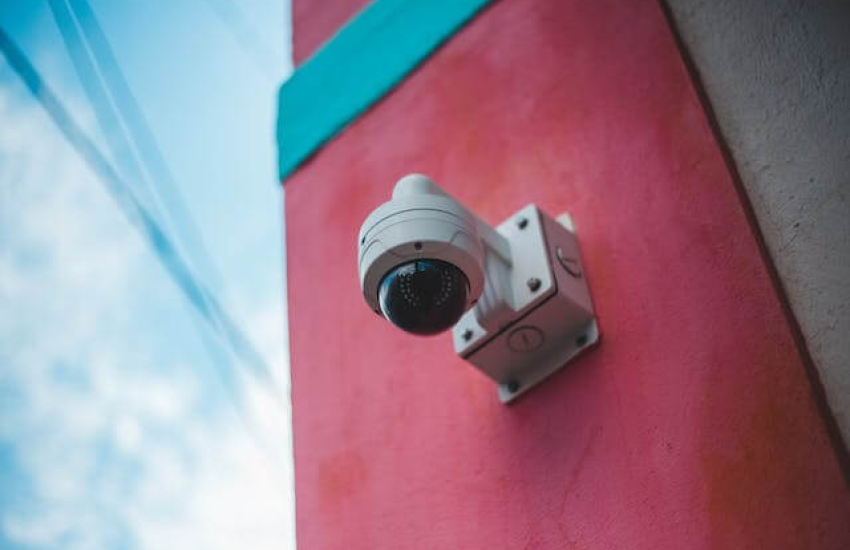How To Install IP Camera with NVR and PoE Switch
IP Camera stands for Internet Protocol Camera. These types of video cameras transmit and receive video data over a specific network or the internet. These are used for security and surveillance. There are different types of IP Cameras available. But the most used cameras are the Dome Camera, The Bullet Camera, and The PTZ (Pan, Tilt & Zoom Camera).
NVR stands for Network Video Recorder. NVR is a specialized device that records and stores digital video on a hard drive, USB drive, cloud, or any other storage system.
PoE stands for Power over Ethernet. This is a technology that uses an ethernet cable to transfer data and deliver power to IoT devices.
Put all these three together, and you have a great surveillance system for your office, business, home, or wherever.
At the end of the article we will also share with you the option to do the same with a cloud based NVR solution instead and share some pros an cons.
How To Install IP Camera with NVR and PoE Switch
To set up a surveillance system with an NVR and PoE Switch, you need some devices and pieces of equipment first. You need -

- A number of IP Cameras
- An NVR
- A PoE Switch
- A Router
- A bunch of ethernet cables for your devices
- HDMI or VGA cable
- A TV or monitor for monitoring
- A computer system for setting up the system
Now that you have all the necessary items follow the instructions below to set up your surveillance system.
Install the IP Cameras:
There are a few types of IP Cameras that you can choose from, but all of them have the same procedure for installing them on walls or ceilings. Make sure to put them on advantageous and informative angles.
Connect the PoE Switch to the NVR:
Take an ethernet cable, connect one end of it to any port of the PoE Switch, and connect the other end to the ethernet port on the NVR.
Connect the PoE Switch to your network:
Take another ethernet cable. Connect one end of it to one of your router’s LAN ports and the other end to any of the ports of the PoE Switch.
Connect the IP Cameras to the PoE Switch:

Now, connect ethernet cables to your PoE Switch according to the number of cameras you have installed. Then, route those cables to your cameras in a way that the cables won’t easily get damaged over time.
Power the PoE Switch and the NVR:
Power the PoE Switch and the NVR using the power cables that they came with, and make sure that both the devices and the IP Cameras have power before continuing with the rest of the steps.
Connect the NVR to a monitor or TV:
For monitoring, you need a display. It may be a monitor or a TV. If you look, you will find an HDMI or a VGA port on the NVR. Use that port to connect the NVR to the display.
Connect a computer to the PoE Switch:
Now, take another ethernet cable and use it to connect a computer to the PoE Switch because you need a computer to set up and configure the IP Cameras.
Configure and set up the cameras:
Once all of the steps above are done, use the computer to add, set up, and configure the cameras with the NVR. If all of the steps are followed properly, then you should have a working surveillance system.
FAQs
Q1. What is the maximum distance from an IP Camera to a PoE Switch?
Ans: The maximum distance from an IP Camera to a PoE Switch is 100 meters (328 feet).
Q2. What are the main components of an NVR?
Ans: An NVR has four main components. These are - IP Camera, Recorder, Storage System, and Internet Capabilities.
Q3. How many cameras can a PoE Switch support?
Ans: Under the IEEE 802.3af, a PoE Switch can utilize 24 ports. However, the IEEE 802.3at can utilize only 12 ports.
Q4. What is the difference between IP Cameras and CCTV Cameras?
Ans: IP Cameras transmit data through a network and can be used online. But CCTV Cameras are used for surveillance, which transmits a signal to a monitor for observation.
Q5. Can IP Cameras be used without an internet connection?
Ans: Yes, they can be used offline with limited features.
Q6. Can IP Cameras be used without an NVR with a cloud VMS instead?
Ans: Yes, instead of using an NVR today often the NVR is omitted in favor of a cloud service like IPTECHVIEW. The advantages are a simpler install, saving on the NVR hardware but the main advantage is to have the video stored offsite. Cloud storage makes it easier to share videos and by eliminating the NVR which is the part that fails the most, you get a more robust system. Modern systems will buffer all recording on SD-Card and then upload to the cloud and that way provide some redundancy and always work even if there is a short-term internet outage.
Conclusion
Surveillance Cameras are one of the best ways you can keep an eye out for the things you care about. And NVRs add another layer to it. Using IP Cameras, NVRs, and PoE Switches, you can supervise whatever you want from anywhere around the world. Consider looking at a cloud video surveillance solution like IPTECHVIEW as an upgrade to the classical on premises NVR approach.


